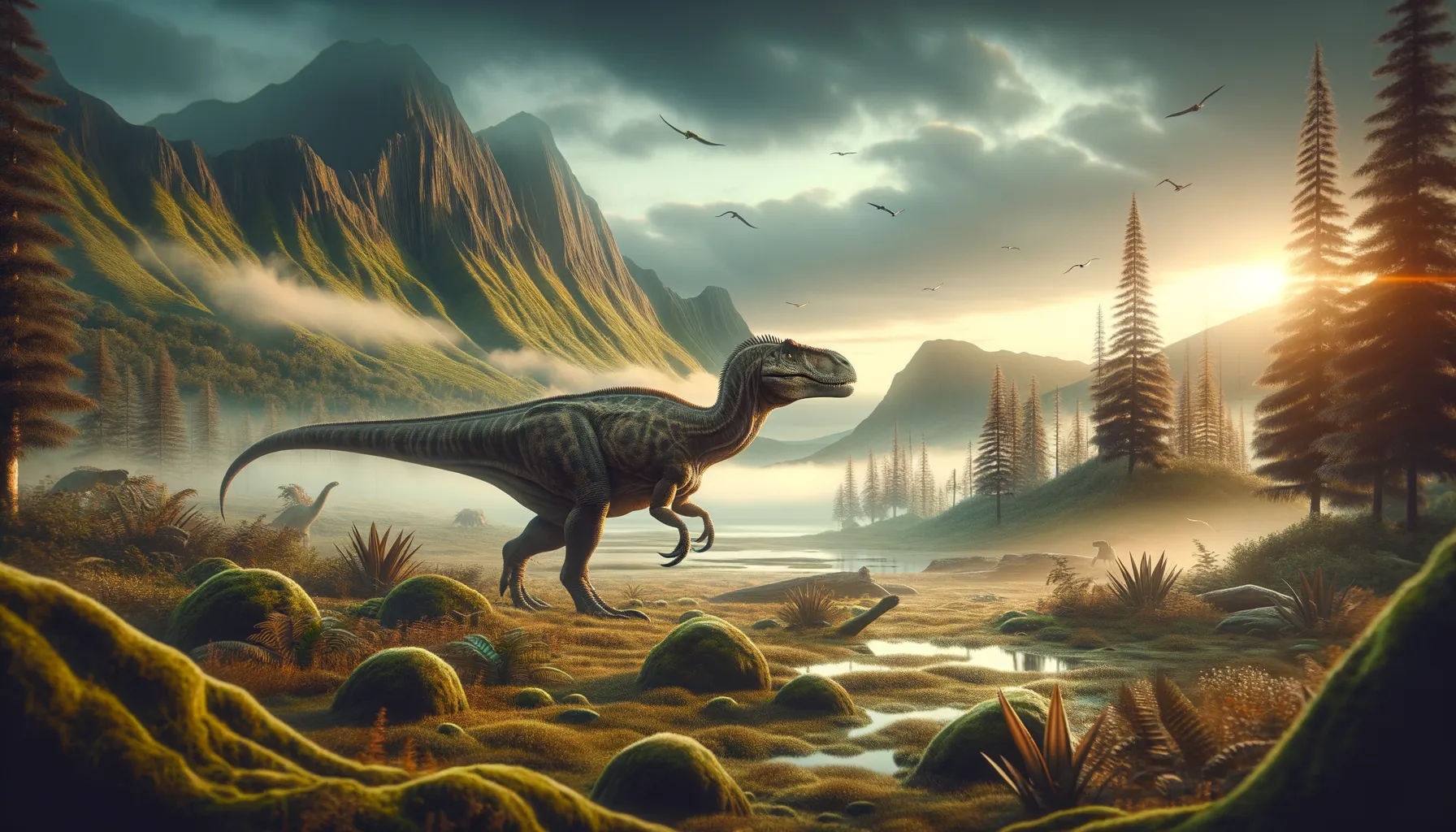
Mifunesaurus
A mystery of Japan's prehistoric past.
Period
Cretaceous
Length
Approximately 5 to 7 meters in length.
Height
Height estimates are not well-documented.
Weight
Estimated at several tons, typical for theropods.
Mifunesaurus is known from very limited fossil material, believed to be a theropod dinosaur from the Late Cretaceous period. Discovered in Kumamoto, Japan, it reflects the diverse dinosaur fauna of the region during its time. Although not much is known about this dinosaur, paleontologists believe it was carnivorous, like many theropods, possibly indicating an active predatory lifestyle.
Diet
Mifunesaurus is believed to have been a carnivore, preying on other animals. Its diet would likely consist of smaller dinosaurs and other prehistoric creatures found within its ecosystem.
Hunting
As a theropod, it may have engaged in solitary hunting, using its speed and agility to catch prey. It likely had keen senses to detect and track potential food sources effectively.
Environmental challenges
Living in the lush landscapes of Late Cretaceous Japan, Mifunesaurus would have faced challenges such as climatic changes and competition for resources. The shifting environment could have influenced its adaptations to hunt effectively. Predation risks from larger carnivores or rival theropods may have also been significant threats.
Speed
Estimated to be relatively fast for its size.
Lifespan
Unknown, as specific data is limited.
First discovery
First discovered in 1992 in Kumamoto, Japan.
Fun Facts
- Mifunesaurus is a dinosaur that was discovered in Japan, specifically in the area of Mifune, which is where it gets its name.
- This dinosaur lived during the Late Cretaceous period, which makes it one of the last known dinosaurs before their mass extinction.
- Mifunesaurus is thought to have been a theropod, which means it was likely a bipedal carnivore, similar to other famous theropods like Tyrannosaurus and Velociraptor.
- The known fossils of Mifunesaurus include teeth and some skeletal fragments, making it a bit of a mystery in terms of its full appearance.
- Mifunesaurus helps paleontologists learn more about the diversity of dinosaur species in Asia during the Cretaceous period.
- Despite its limited fossil record, Mifunesaurus sparks curiosity about what other unique dinosaurs might have lived in Japan.
- The species highlights the importance of global fossil sites, showing that significant discoveries can happen outside of traditionally famous locations.
Growth and Development
Details about its growth and development remain speculative due to limited fossil evidence. However, as a theropod, its growth might have followed similar patterns to that of other comparable dinosaurs, involving gradual increases in size and strength. Juveniles would require significant parental care or natural instincts to survive the perilous environment of their time.
Habitat
Mifunesaurus resided in what is now modern-day Japan, which was part of a series of lush, forested volcanic islands. The environment was rich, with abundant resources, supporting diverse dinosaur fauna. Seasonal weather changes could have impacted habitat conditions, affecting food availability and migration patterns.
Interaction with other species
As a carnivorous dinosaur, Mifunesaurus likely had a dynamic relationship with other species, preying on smaller herbivores while competing with similar sized carnivores for food. Its interactions would be crucial in maintaining the balance within the ecosystem, affecting prey populations and possibly influencing vegetation growth indirectly.
Natural lifespan
Mifunesaurus's natural lifespan is speculative due to lack of specific evidence.
Reproduction
Reproductive details are scarce, but it can be hypothesized to have laid eggs like other theropods. Nesting behavior could include selecting secluded sites to protect offspring. Incremental parental involvement might have varied, potentially providing care until juveniles gained independence.
Social behaviour
There is limited information about its social behavior, but as a theropod, it might exhibit solitary tendencies or limited group interactions. Potential communication would include visual signals or vocalizations. Social interactions could primarily revolve around territorial disputes or mating rituals.
Fossil locations
Fossil remains of Mifunesaurus have been discovered in Kumamoto Prefecture, Japan. The locality provides vital clues about the presence of diverse dinosaur species in that region during the Late Cretaceous. Further excavations may reveal additional fossils, enhancing our understanding of this enigmatic dinosaur.
